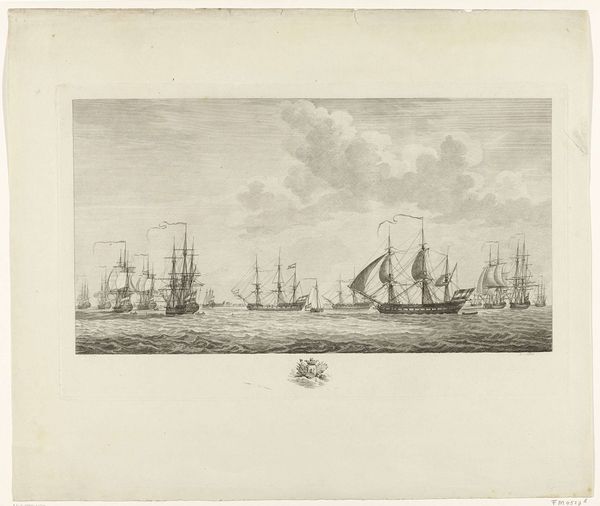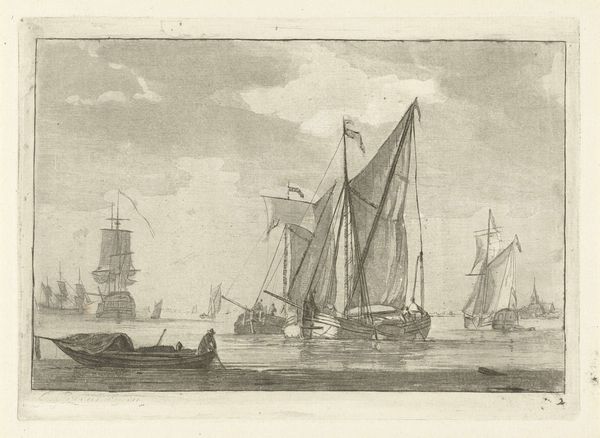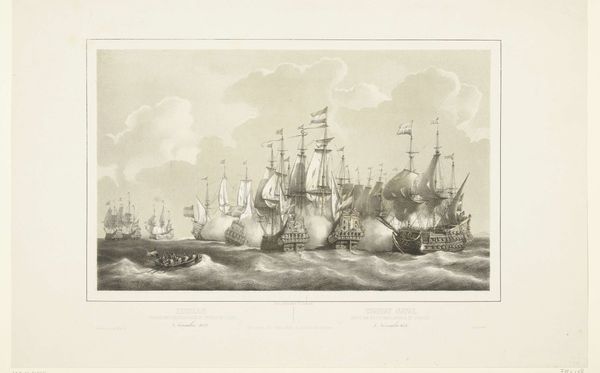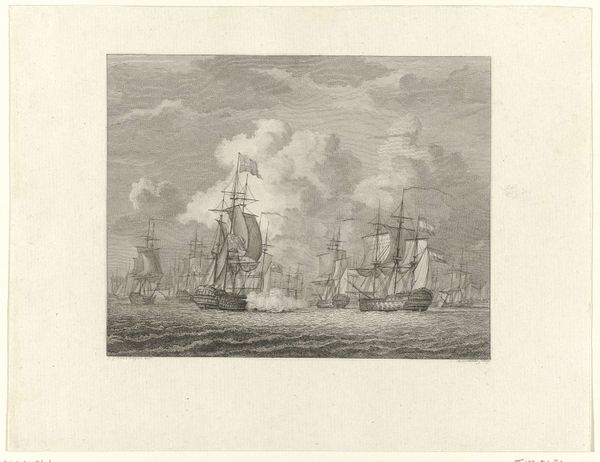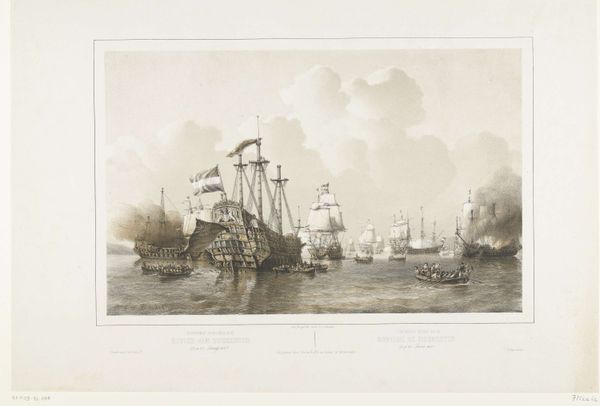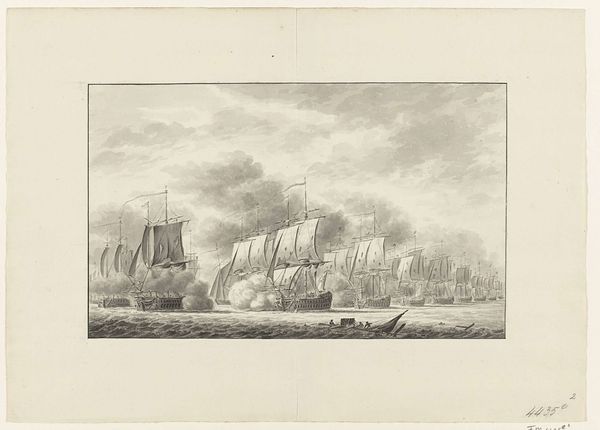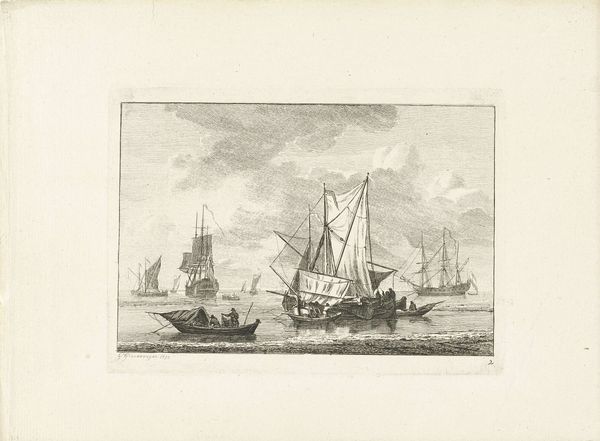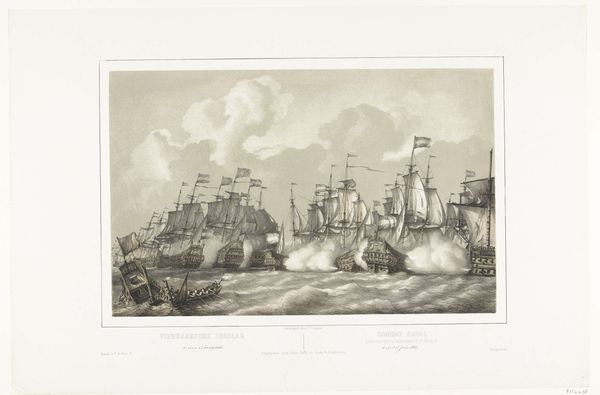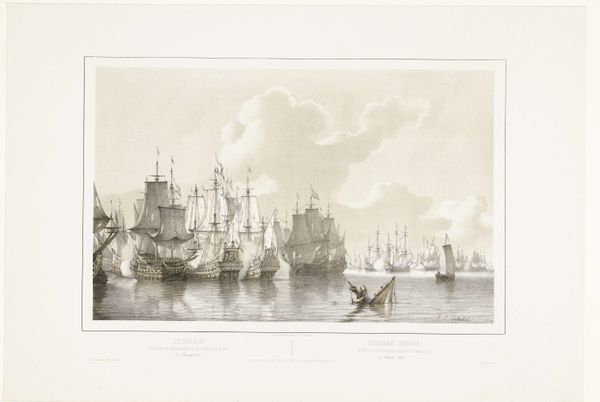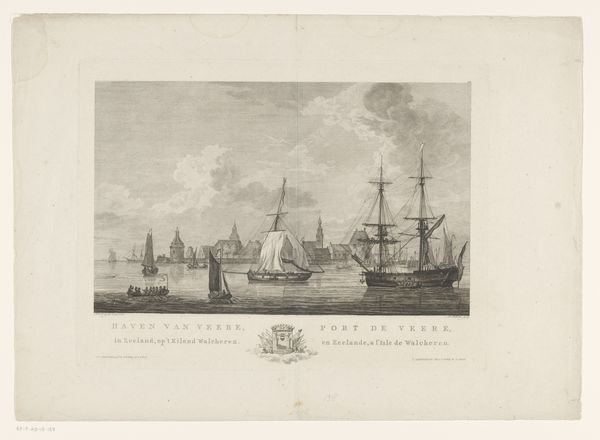
Dimensions: height 306 mm, width 503 mm
Copyright: Rijks Museum: Open Domain
Curator: This engraving by Mathias de Sallieth captures the Dutch war fleet at Vlissingen in 1784. What leaps out at you? Editor: It feels...grand, yet fragile. Those immense ships rendered in such delicate lines. It's a strange marriage of power and vulnerability. I'm instantly curious about the process, the hand behind those intricate marks. Curator: Exactly! The printmaking process itself speaks to that tension. De Sallieth used engraving, meticulously incising lines into a metal plate. Think of the labor involved in portraying each rope and sail with such precision! It brings up questions about naval power, and who benefitted. Editor: Right. I bet most viewers probably weren't sailors or shipbuilders, who knew the material reality. They were consuming an idea of national strength, detached from the intense labor of maritime industries. I wonder how those artisans viewed their own work, in creating such idealized imagery. Curator: Well, consider the context. It’s 1784— the Dutch Republic had experienced considerable political turmoil, and there were naval conflicts not far in the past. The artist captures an idealized image of Dutch naval power, when actually their Golden Age had passed, if you like. There is real pathos to that effort to appear strong, right? It makes me reflect on how much art captures our hopes for the future, rather than present-day reality. Editor: It definitely does. And it shows that it isn’t just about history but about a manufacturing culture too. Someone made the paper, made the ink, the plate. It required a certain kind of social organization to bring all that to pass! The artwork isn’t just a representation of a fleet but represents labor, industry, the whole society. Curator: I love how this seemingly straightforward historical scene unfolds into so many layered interpretations. De Sallieth hands us a slice of history, but it's up to us to excavate its deeper meanings. Editor: Precisely. And looking at how such delicate lines were forged under real-world conditions brings everything closer to us.
Comments
No comments
Be the first to comment and join the conversation on the ultimate creative platform.
